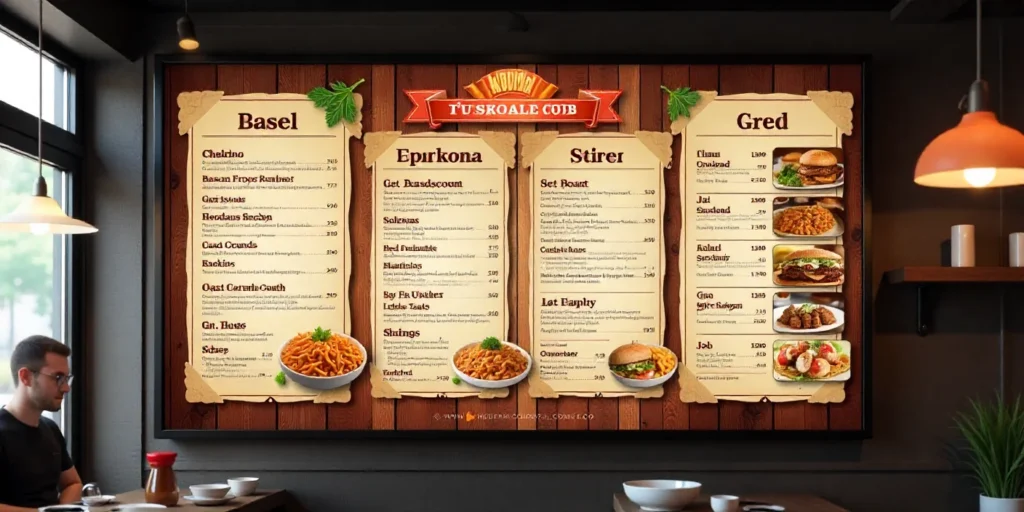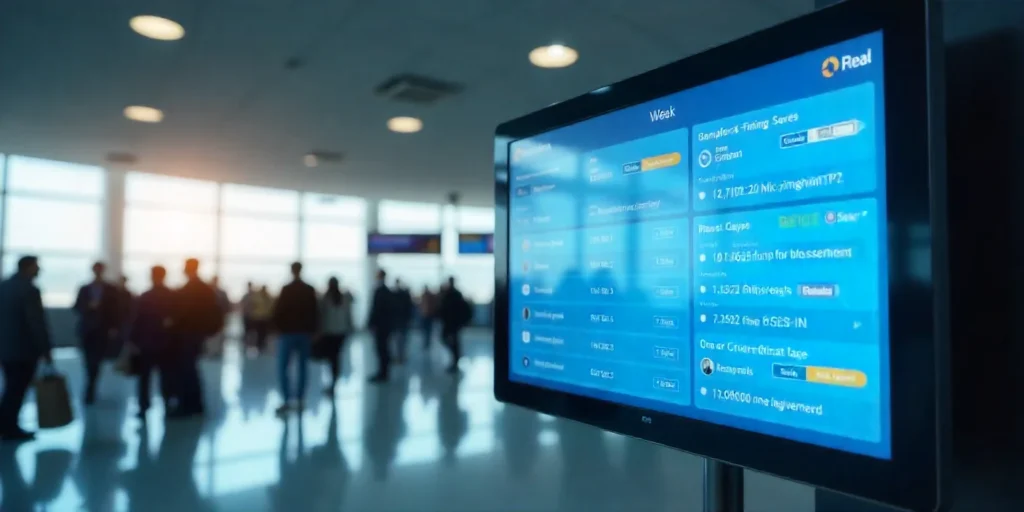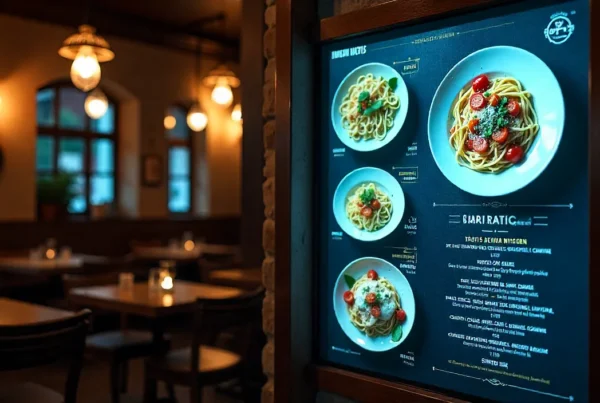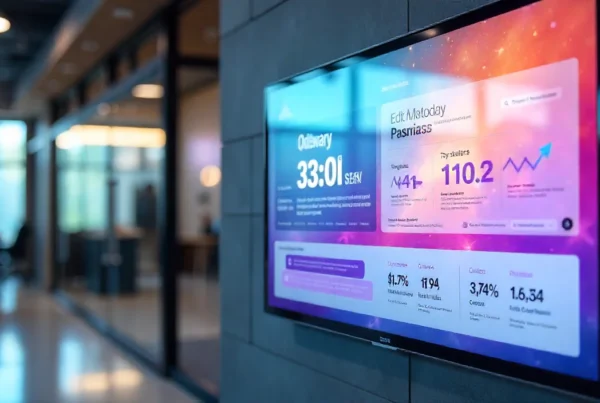Against a backdrop of a plethora of feeds and pop-ups, the displays that are able to capture attention are the ones that can communicate concisely, quickly, and beautifully. A lot of digital signage designs are not merely decoration, but they are how brands educate, entertain, influence, and direct people in the moments that count. Well-considered design on an appropriate platform can transform screens into more than wallpaper and begin generating results. And that is where a complete digital signage solution, such as Nento Digital Signage, excels, combining easy-to-use software to create digital signage with reliable hardware and processes your staff can realistically depend on.

Core Principles of Effective Digital Signage Design
The 3-Second Rule
At a glance, the viewers must understand the underlying message. Have a loud headline, one attention-grabbing image or number, and one step.
Simplicity Wins
Fewer elements, whitespace, and less copy. Each additional detail vies against other details and, therefore, pares down what is not working toward the purpose.
Hierarchy & Flow
Give the eye the headline/key visual/metric/call to action. Create a natural reading path with the use of size, weight, spacing, and alignment.
Readability First
• Typeface: crisp sans-serif families (or your brand font) with high x-height.
• Size: consider viewing distance (e.g., 2436 pt+ to cover 10-15 ft).
• Contrast: WCAG-compatible color contrasts; no thin text on busy images.
High-Quality Assets
Native resolution images/video (e.g., 19201080 FHD, 38402160 4K). The visuals are blurred, and credibility is destroyed immediately.
Brand Consistency
Use brand colors, logos, and tone. Uniformity among the locations creates familiarity and confidence.
Design for the Environment
Take into account the glare, dwell time, and traffic flow. A hallway glance screen should have larger type and fewer frames than a longer dwell lobby screen.
Digital Signage Design Ideas: Finding Inspiration
By Industry
• Retail: new arrivals, time-limited promotions, UGC Spotlights, curbside pickup guidelines.
• Corporate: KPI dashboards, safety, meeting room schedules, recognition walls.
• Hospitality/QSR: Dynamic menus, dayparting specials, queue status, allergens, and nutrition.
• Healthcare: Wayfinding, check-in instructions, wellness hints, and wait-time disclosures.
By Goal
• Inform: Live news, weather, transit, social walls, and what is going on today.
• Promotion: Animations of product features or highlights, countdown time (Happy Hour in 00:12:30), and time-limited packages.
• Direct: Interactive wayfinding, room and desk booking, and points.
Leverage Templates, Then Customize
Start with Digital Signage Design Templates to create the layout and pacing and customize your brand. Templates enable teams to deliver faster and still maintain quality and consistency—particularly over multi-site networks. Daypart, localize, and target content with your CMS playlists.
From Idea to Screen: How to Make a Signage That Works
1. Define One Goal
What is the viewer supposed to do/feel? (Buy, scan, learn, go left/right, wait calmly, etc.)
2. Know Your Audience
First-time visitor and regular, staff vs. guest, on-the-go vs. seated. This propels copy length, movement, and CTA style.
3. Plan the Content
List of messages, images/videos, and data feeds (POS, calendars, BI, and social). Choose both the length of the loop and the sequence of frames.
4. Pick the Right Tool
Your digital signage software is the power that makes your design signage come to life, with data binding, templates, playlists, targeting, and analytics.
5. Design & Build
Build new signage or create a signage layout using templates. Style of lock brand, design reusable elements, and establish a CTA system (QR, short URLs, NFC).
6. Test & Deploy
Check readability in situ. Check the smoothness of motion, the freshness of data, and the availability of failover/offline playback. Pilot, measure, and iterate.
(This practical flow sits at the heart of a scalable digital signage system design—goal → content → tooling → deployment → analytics).

The Power of Customization: Beyond Basic Templates
Where Templates Stop
Generic packs may be cookie-cutter, may not support discrete data structures, or lack brand sensitivity.
Why Go Custom
• Brand experience at the intersection of all screens and sites.
• In line with objectives and target audience (e.g., action points of a funnel, employment announcements, or alerts regarding compliance).
• Designed to fit your tech stack—data-driven elements that can be integrated into your digital signage system design (BI dashboards, inventory, room booking, POS).
For a truly standout custom signage experience, consider a professional digital signage solution. Companies like Nento Digital Signage offer custom digital signage design services to ensure your content is as powerful as your technology.
Pro Tip
Combine the two worlds: use Digital Signage Design Templates to be fast and consistent and overlay specially designed signage elements to achieve high-impact applications (e.g., interactive wayfinding, personalized offers, localized compliance).
Choosing the Right Tools: Software for Digital Signage
Must-Have Features
• Drag-and-drop editor with brand libraries, grids, and alignment guides.
• Library of templates (menus, dashboards, promos, wayfinding).
• Scheduling/remote control of dayparting, localization, and multiple-site governance.
• Video, image, HTML5, live data, and API feed support via the media.
• Health and security of the device: monitoring, role-based access, SSO, and content approvals.
• Analytics: play logs, impressions proxies, and QR/URL tracking to attribute content to results.
Integrate, Don’t Isolate
Make the CMS the heart of your digital signage system design—integrate it with POS, calendars, HRIS, BI (Power BI/Tableau), and marketing stacks. Integration allows you to automate content and time impact.
Why Nento
Nento combines software for digital signage with hassle-free workflows: Branded templates, data-driven widgets, targeted data, and fleets—it works perfectly to grow from one lobby to hundreds of locations.
Frequently Asked Questions (FAQs)
How long should my digital signage content loop be?
Most spaces use a 510-minute loop. Leave text-heavy slides on the screen for at least 10-15 seconds to allow the audience to complete the reading.
Can I use my existing brand materials?
Absolutely—please do. The most desirable digital signage design supports brand identity. Add logos, fonts, and color schemes to your CMS to be consistent.
Free templates vs. custom—what’s the difference?
Free templates are fast to make and have a generic quality to them. Custom digital signage design is created to suit your purposes, target audience, and brand to achieve enhanced engagement and understanding. Nento Digital Signage is capable of guiding you to do the right thing.
How do I measure success?
Compared to your objective: sales boost on a featured product, perceived wait time, attendance, additional QR scans, or intranet visits. The use of advanced stacks links signage analytics with POS/CRM.
What technical specs should I use?
Adjust your screen resolution (e.g., 1920×1080 FHD). .jpg/.png (images) and .mp4 (H.264/H.265) (video). Keep bitrates affordable to the network.
Design with Purpose
Simple. Focused. On-brand. That is the digital signage design blueprint that literally makes the needle move—either you begin with digital signage design templates, or you have digital signage design elements commissioned that connect to live data.





